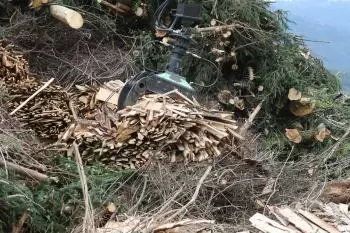
The generation of biofuels, a priori, represents several advantages over obtaining fossil fuels used to get fossil energy. The main advantage is that the regeneration of resources does not take millions of years as it happens with coal, oil, or natural gas.
In any case, the regeneration of biofuels is also not fast enough to be considered a renewable energy source. However, one of the objectives of developing biofuels is to reduce CO 2 and carbon monoxide emissions that transportation fuels produce.
On the other hand, biofuels are an indirect way of harnessing solar energy. In this case, solar energy is used thanks to the photosynthesis of cultivated plants. The rest of the power in this fuel comes from the chemical energy the plant generates as it processes nutrients from the soil.
The United States and Brazil are pioneers in this type of biofuel. They are the largest producers since they developed this alternative fuel much earlier than other countries.
With the aim of improving production and mitigating the harmful effects of their production, we can distinguish four different generations of biofuels:
First-generation of biofuels
First-generation biofuels are made from food crops grown on farmland, and the fuel produced can be liquid or gaseous. They come from crops such as sugar cane, sugar beet, or molasses; cereals such as wheat, barley, or corn; or oils and animal fats such as palm or sunflower.
With this generation of biofuel production, food crops are grown explicitly for fuel production and nothing else. The sugar, starch, or vegetable oil obtained from the crops are used for diesel fuel or ethanol production.
First-generation biofuels were the first to be manufactured and are the most significant concern since food crops are used as feedstock. However, they are not sustainable due to their production's potential stress on food commodities.
Organic chemicals and materials must follow a biorefinery model under environmentally sustainable conditions. Where these operate, their product range is limited mainly to simple materials (i.e., cellulose, ethanol, and biofuels).
Sweet sorghum (Sorghum bicolor (L.) Moench), a sugar crop with broader adaptation and a high potential for bioenergy and ethanol production, is expected to meet food, feed, fodder, fuel, and fiber demands.
Second-generation of biofuels
Second-generation biofuels are derived from cellulosic biomass, such as perennial grasses.
Biomass is a broad term meaning any organic carbon source that is rapidly renewed as part of the carbon cycle. Biomass is derived from plant materials but can also include animal materials.
Second-generation biofuels are made from lignocellulosic biomass or woody crops, agricultural residues, or waste plant material. Waste plant material comes from crops intended for food that have already served their food purpose.
The feedstock used to generate second-generation biofuels would have to grow on land that cannot be used to grow food effectively. Also, your crop should not consume a lot of water or fertilizers.
This form of fuel generation has advantages and disadvantages. The advantage is that, unlike regular food crops, no arable land is used solely for fuel production. The downside is that it can be pretty difficult to extract the fuel, unlike common food crops. For example, it might require a series of physical and chemical treatments to convert lignocellulosic biomass into liquid fuels suitable for transportation.
Third-generation of biofuels
Third-generation biofuels are based on the philosophy of taking advantage of aquatic plants.
An article published by Michael Briggs of the UNH Biofuels Group offers estimates for the realistic replacement of all vehicular fuel with biofuels using algae. The algae biofuel used to have a natural oil content of over 50%. For this reason, Briggs suggests it can be grown in algae ponds at sewage treatment plants.
These algae can then be extracted from the system and transformed into biofuels. Subsequently, the dried residue is reprocessed to create ethanol.
The production of algae to harvest oil for biofuels has not yet been done commercially. However, feasibility studies have been carried out to arrive at the above performance estimate.
In addition to its high yield, the use of algae does not imply a decrease in food production because it does not require farmland or fresh water.
Fourth-generation of biofuels
Similarly, fourth-generation biofuels are made using non-arable land, and they are the most advanced biofuels. However, unlike third-generation biofuels, they do not require the destruction of biomass.
It is expected that in a few years, only a minimal proportion of the total production of biofuels will be of the first generation and that the second and third will be the most widely used due to their greater sustainability over time since they do not use food crops.
An important variable to consider is climate change affects crop yields, so it is not advisable to force intensive cultivation to produce fuel.